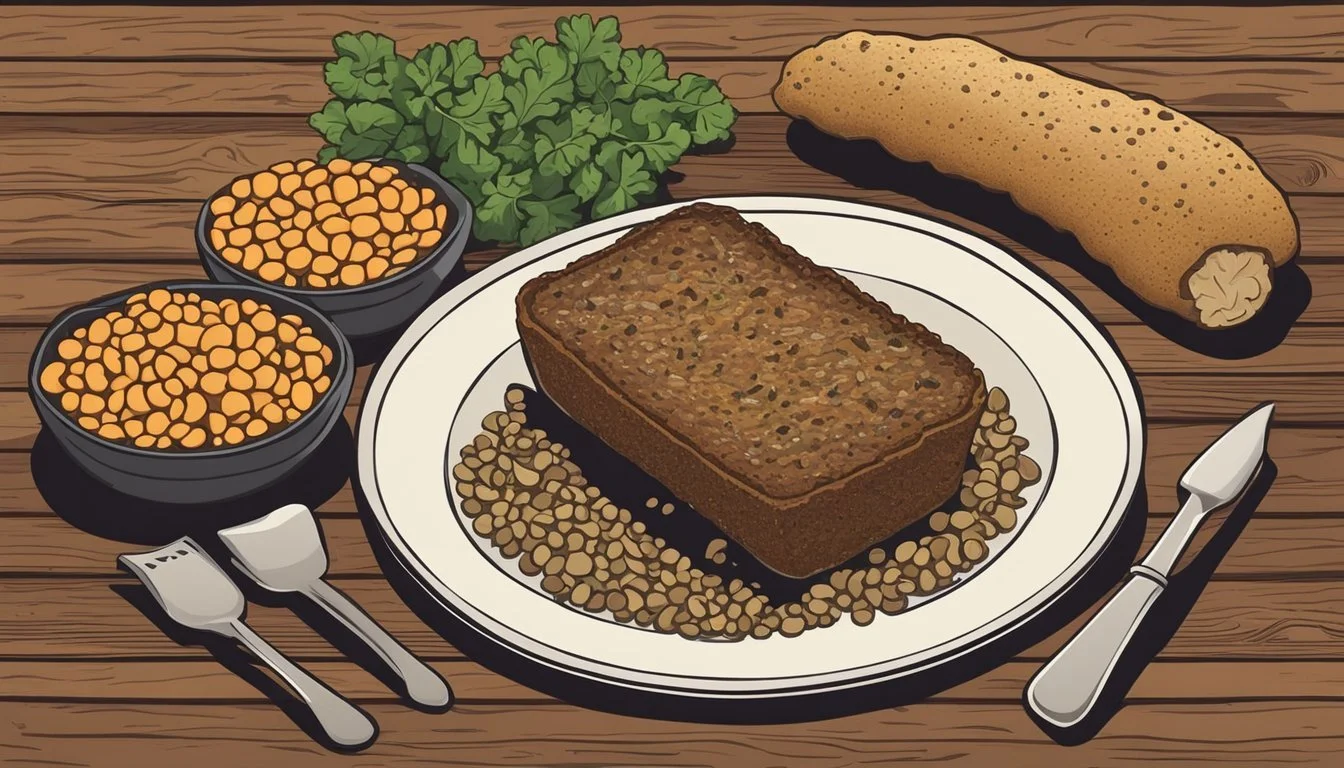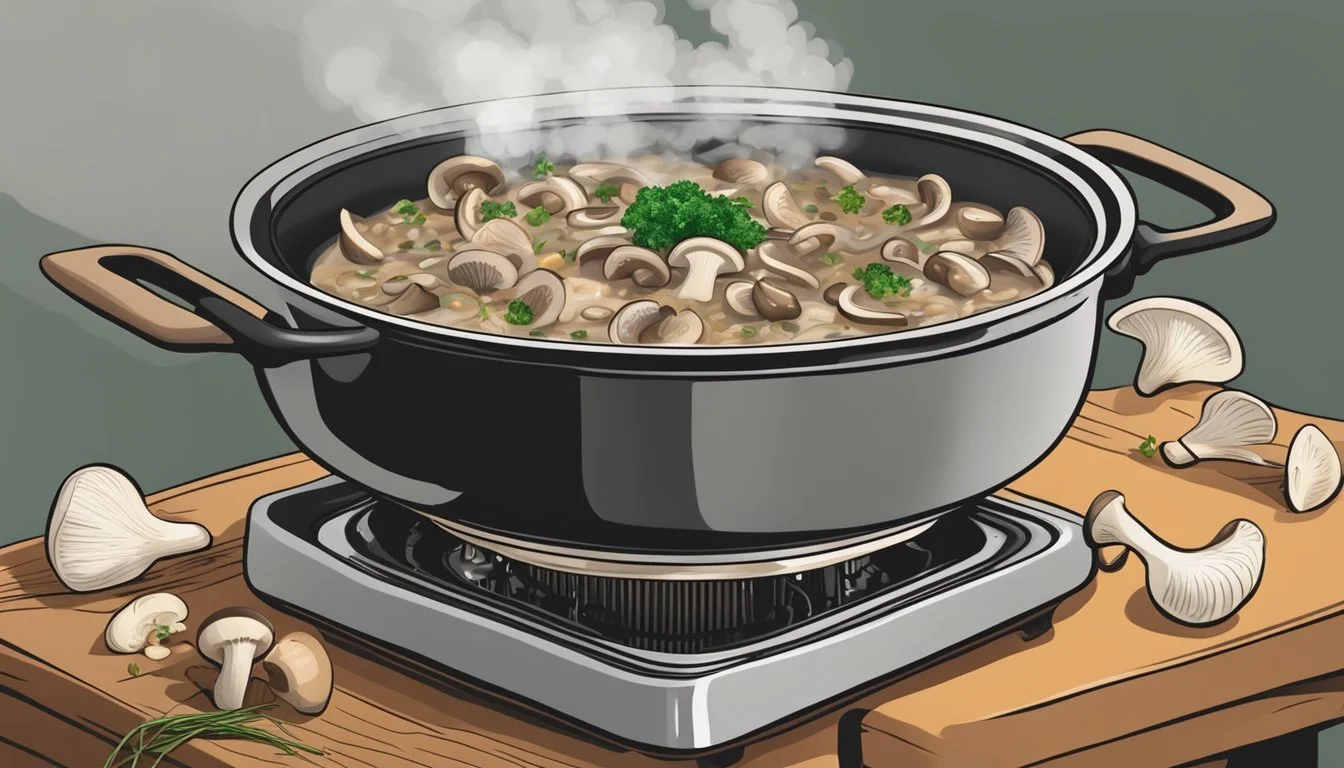10 Diabetes-Friendly Recipes Using Mushrooms
Delicious and Healthy Options
Mushrooms are a versatile and nutritious ingredient that can be a valuable addition to a diabetes-friendly diet. Known for their low carbohydrate content, mushrooms offer a variety of health benefits including supporting immune function and providing essential vitamins and minerals. Discovering diabetes-friendly recipes that utilize mushrooms can be an excellent way to manage blood sugar levels while enjoying delicious meals.
In this article, readers will find a selection of ten carefully curated recipes that incorporate mushrooms, catering specifically to those managing diabetes. These recipes range from appetizers to main dishes, each designed to be easy to prepare and packed with flavor. This collection aims to show that maintaining a diabetes-friendly diet does not mean sacrificing taste or satisfaction.
1) Mushroom and Spinach Stir-Fry
Mushroom and Spinach Stir-Fry is an excellent dish for those looking to manage diabetes. It is quick, easy to prepare, and full of flavor. Mushrooms and spinach provide a low-carb base that is packed with vitamins, minerals, and antioxidants.
To start, fresh mushrooms are sautéed in sesame oil with garlic for about two minutes. This brings out their earthy flavors.
Next, fresh spinach is added to the pan. Since spinach wilts quickly, it can be added in batches if it’s too much to fit all at once.
Once wilted, this stir-fry offers a nutrient-dense, diabetes-friendly option that pairs well with grilled chicken or tofu for added protein.
This simple yet delicious dish can become a staple in a healthy dietary regimen aimed at maintaining stable blood sugar levels.
2) Portobello Mushroom Tacos
Portobello Mushroom Tacos offer a hearty and flavorful option for those managing diabetes. They are simple to prepare and can be customized with various toppings to suit individual tastes.
Begin by marinating the mushrooms in a mixture of soy sauce, olive oil, balsamic vinegar, chili powder, and garlic powder. This combination enhances the mushrooms' natural umami flavor.
Sauté the mushrooms in a pan over medium-high heat. Cook each side for about 3-5 minutes until they are browned and slightly charred.
Alternatively, roast the mushrooms in the oven at 425 degrees, coated with a bit of taco seasoning, for 15-20 minutes.
Assemble the tacos by placing the cooked mushrooms in warmed tortillas. Add fresh toppings like avocado, cabbage, and cilantro. For an extra kick, include sliced jalapeños and a drizzle of jalapeño sauce.
These tacos can also serve as a healthy alternative to carne asada, providing a similar texture without the meat. The meal is filling, nutritious, and diabetes-friendly, making it a versatile addition to any diet.
3) Stuffed Mushrooms with Quinoa
Stuffed mushrooms with quinoa offer a nutritious and tasty option for those managing diabetes. The recipe features portobello or button mushrooms filled with a satisfying mix of quinoa and vegetables.
To begin, preheat the oven to 400°F (200°C). Cook three tablespoons of quinoa with six tablespoons of water. Allow the quinoa to simmer for ten minutes, then let it sit covered for an additional four minutes.
Meanwhile, remove the stems from the mushrooms and chop them finely. Sauté the chopped stems with vegetables such as bell peppers, onions, and spinach in a skillet. Once the vegetables are tender, combine them with the cooked quinoa in a mixing bowl.
Spoon the quinoa and vegetable mixture into the mushroom caps. Arrange the filled mushrooms on a baking sheet and bake for about 15-20 minutes. The mushrooms should be tender, and the filling should be slightly crisp on top.
These stuffed mushrooms with quinoa make an excellent side dish or a light main course. They're rich in protein, fiber, and essential nutrients, making them a smart choice for a diabetes-friendly meal.
4) Mushroom and Lentil Loaf
Mushroom and lentil loaf offers a hearty, nutritious alternative to traditional meatloaf, making it an excellent choice for those managing diabetes.
Rich in fiber and protein, lentils help stabilize blood sugar levels. Mushrooms add a savory depth to the dish and offer various vitamins and minerals.
Start by cooking lentils according to package instructions. While the lentils cook, heat olive oil in a non-stick pan over medium heat. Sauté onions, carrots, and diced mushrooms until they become tender, usually around 5-7 minutes. Garlic and herbs such as thyme or Italian seasoning can enhance the flavor.
After the vegetables are cooked, set them aside to cool slightly. Mash about half of the cooked lentils in a food processor and mix them with the remaining whole lentils. Combine the lentils with the sautéed vegetables. Oats can be added for extra binding and texture.
Preheat the oven to 350°F (175°C) and line a loaf pan with parchment paper. Press the lentil and mushroom mixture firmly into the pan.
Bake for 30-45 minutes, or until the loaf is firm and golden on top. Let it cool for a few minutes before slicing. This dish pairs well with a green salad or steamed vegetables for a balanced meal.
5) Mushroom and Barley Soup
Mushroom and Barley Soup is a hearty dish that's both nutritious and satisfying. It combines the earthy flavors of mushrooms with the chewy texture of barley, making it a perfect comfort food for people with diabetes.
Begin by sautéing onions, carrots, celery, and mushrooms in a soup pot with a bit of oil over medium heat. After about five minutes, add chicken broth, thyme, bay leaves, salt, and pepper. Bring the mixture to a boil, then reduce to a simmer and cook for around 20 minutes.
While the broth simmers, prepare the barley. Rinse it under cold water and add to a separate pot with boiling water, then reduce the heat to a simmer. Cover and cook for about 25-30 minutes until the barley is tender but still slightly chewy. Drain any excess water.
Once the vegetables are tender, add the cooked barley to the soup. Simmer for an additional few minutes to meld the flavors together. Remove the bay leaves and thyme stems before serving. This method captures the essential components while being mindful of the dietary needs of those managing diabetes.
6) Grilled Mushroom Skewers
Grilled mushroom skewers offer a delectable and diabetes-friendly option for any meal. This dish is easy to prepare and can be a delightful addition to a balanced diet. It highlights the natural flavors of mushrooms while providing a low-carb, low-calorie option.
To prepare, start by soaking wooden skewers in water for at least 15 minutes. This prevents them from burning on the grill.
Next, mix a marinade of your choice. Popular options include balsamic vinegar, garlic, olive oil, and herbs. Blend the ingredients until smooth. Toss the mushrooms in the marinade and let them sit for at least 15 minutes.
Thread the marinated mushrooms onto the soaked skewers. Grill them over medium-high heat until they are tender and slightly charred, approximately 2-3 minutes per side.
Serve immediately, perhaps garnished with fresh parsley. These skewers can be enjoyed as a side dish or as part of a larger meal.
7) Mushroom and Cauliflower Rice
Mushroom and cauliflower rice is a delicious, low-carb dish perfect for individuals managing diabetes. The earthy flavors of mushrooms combined with the mild, nutty taste of cauliflower create a satisfying meal without the added carbohydrates of traditional rice.
To prepare this dish, start by cooking cauliflower rice as per package instructions. In a skillet, heat olive oil and sauté onions until they are soft. Adding garlic at this stage enhances the aroma and flavor.
Introduce sliced mushrooms to the skillet. Cook until the mushrooms are tender and have released their juices. This process deepens the flavor of the dish and adds a pleasant texture.
Next, mix in the cooked cauliflower rice. Stir thoroughly to ensure the cauliflower absorbs all the flavors from the mushrooms and seasonings. A splash of soy sauce can be incorporated at this point for an additional layer of taste.
Finally, to add a bit of greenery, spinach can be stirred in until wilted. This not only boosts the nutritional value of the dish but also adds a vibrant color. The result is a flavorful, diabetes-friendly side dish or main course that is both healthy and satisfying.
8) Mushroom and Asparagus Frittata
A Mushroom and Asparagus Frittata provides a nutritious and diabetes-friendly option for any meal.
To start, preheat your oven to 350°F. In a bowl, whisk together eggs, a pinch of salt, and pepper until frothy. Use 6-8 eggs, depending on the size of your pan.
In an oven-safe skillet, heat a teaspoon of olive oil over medium heat. Add sliced mushrooms and cook for 2-3 minutes. Next, add chopped asparagus and sauté for another 2-3 minutes until just tender.
Remove the skillet from heat and spread the vegetables evenly. Pour the egg mixture over the vegetables. If desired, sprinkle some feta cheese or chopped parsley for added flavor.
Transfer the skillet to the oven and bake for 10-15 minutes, or until the frittata is set and slightly golden. Allow to cool for a few minutes before slicing.
This dish can be enjoyed hot or cold, making it perfect for meal prep. Mushrooms and asparagus both offer a range of nutrients while being low in carbohydrates, making this recipe an excellent choice for managing blood sugar levels.
9) Mushroom Stroganoff
Mushroom Stroganoff is a hearty and flavorful dish that's perfect for those managing diabetes. It uses the natural umami of mushrooms to create a satisfying meal without needing heavy, high-carb ingredients.
Start by heating oil or melting butter in a large skillet over medium heat. Add chopped onions and cook until softened, typically around 3 minutes.
Garlic and thyme add essential flavoring. After adding these, allow them to cook for about 30 seconds to a minute until fragrant.
Next, stir in your mushrooms. Common choices include button, cremini, or portobello mushrooms. Cook them until they are tender and browned, which usually takes about 5-10 minutes.
For the sauce, a mixture of broth and cornstarch works well to keep carbs in check. Whisk these together in a medium bowl, adding salt and pepper to taste. Pour this mixture into the skillet and stir until it begins to thicken.
Finally, incorporate a blend of sour cream or a diabetes-friendly substitute if needed. This gives the stroganoff its creamy texture. Stir until everything is well combined and heated through.
Serve over whole-grain pasta or zoodles (zucchini noodles) for a complete and balanced meal suitable for those with diabetes.
10) Mushroom and Turkey Meatballs
Mushroom and turkey meatballs are a delicious and diabetes-friendly option. They combine the rich, earthy flavors of mushrooms with the lean protein of ground turkey.
To start, preheat the oven to 400°F and line a baking sheet with parchment paper. The meatball mixture includes almond meal, Parmesan cheese, beaten eggs, parsley, onion, garlic, salt, and pepper.
Afterwards, add 93% lean ground turkey to the mixture and ensure all ingredients are evenly mixed. Form the mixture into small balls and place them on the prepared baking sheet. Bake until cooked through, typically around 20 minutes.
For the sauce, sauté garlic and onion until fragrant and translucent. Add sliced mushrooms and cook until tender, seasoning with a bit of salt and pepper.
Pour in some vegetable broth and let the sauce reduce slightly. Lower the heat and stir in heavy cream, allowing it to simmer gently.
Add the baked meatballs to the sauce and heat through before serving. This dish pairs well with a side of steamed vegetables or a fresh salad.
Nutritional Benefits of Mushrooms
Mushrooms offer a wealth of nutritional benefits, making them a great addition to a diabetes-friendly diet. They are low in glycemic index, packed with essential vitamins and minerals, and rich in antioxidants that support overall health.
Low Glycemic Index
Mushrooms have a low glycemic index (GI), meaning they cause a slower rise in blood sugar levels. This is crucial for managing diabetes as it helps prevent spikes in blood glucose. Foods with a low GI are beneficial for maintaining stable blood sugar levels and can be an excellent option for those with diabetes or prediabetes.
With their low GI, mushrooms can be included in various meals without significantly impacting blood sugar. This makes them a versatile ingredient in keeping dietary plans balanced and effective for blood sugar control.
Rich in Vitamins and Minerals
Mushrooms are an excellent source of several key vitamins and minerals. They contain high levels of B-vitamins, such as riboflavin (B2) and niacin (B3), which play vital roles in energy metabolism. These vitamins help convert the food we eat into energy and support the nervous system.
Additionally, mushrooms are a good source of potassium, which aids in maintaining normal blood pressure levels. They also provide selenium, an essential mineral with antioxidant properties that protects cells from damage. Including mushrooms in the diet can contribute to meeting daily nutrient requirements while offering flavorful and healthful options for meals.
Antioxidant Properties
Mushrooms are rich in antioxidants, which help protect the body from oxidative stress and damage from free radicals. One of the primary antioxidants found in mushrooms is ergothioneine, a unique compound with significant health benefits.
These antioxidants can reduce inflammation and improve the body’s ability to fight off chronic diseases. For individuals with diabetes, this is particularly important as it helps reduce the risk of complications associated with oxidative stress, such as cardiovascular disease. Incorporating mushrooms into the diet can thus support overall well-being and enhance the body’s natural defenses.
Incorporating Mushrooms into a Diabetes-Friendly Diet
Mushrooms are versatile, nutritious, and can be an excellent addition to a diabetic diet. They are low in calories and carbohydrates and contain valuable nutrients such as protein, vitamins, and minerals.
Balancing Carbohydrate Intake
Mushrooms have minimal carbohydrate content, making them suitable for people with diabetes. Incorporating mushrooms into meals helps maintain stable blood sugar levels. 100 grams of button mushrooms contain approximately 27.49 calories, emphasizing their low-calorie nature.
Using mushrooms in place of higher-carb ingredients can reduce overall carbohydrate intake. For instance, replacing pasta with spiralized zucchini and mushrooms can create a satisfying, low-carb meal.
Pairing with Other Low-Glycemic Foods
Pairing mushrooms with other low-glycemic foods enhances their benefits. Vegetables like broccoli, spinach, and bell peppers complement mushrooms well. Combining these with lean protein sources such as chicken or tofu creates balanced meals.
A mushroom and vegetable stir-fry is a great option. Adding sliced mushrooms to soups or salads not only increases nutrient density but also supports better blood sugar management.
Portion Control Tips
While mushrooms are low in calories and carbs, portion control remains important. A serving size of mushrooms is typically 1 cup of chopped mushrooms, which provides ample nutrients without adding excessive calories.
Incorporating mushrooms in various dishes—soups, salads, or stir-fries—helps keep portions appropriate. Pre-portioning meals can also prevent overeating and ensure balanced consumption.
Combining mushrooms with other nutrient-dense, low-calorie foods helps maintain appropriate portion sizes. Keeping an eye on serving sizes helps in managing overall calorie intake while enjoying delicious, diabetes-friendly meals.
Cooking Techniques to Maximize Health Benefits
To fully harness the health benefits of mushrooms, it is essential to incorporate cooking techniques that enhance their nutritional profile while maintaining their natural flavor and texture. Here are some effective methods to prepare mushrooms for a diabetes-friendly diet.
Grilling and Roasting
Grilling and roasting mushrooms bring out their natural earthiness without adding unnecessary fats. Preheat the grill to medium-high or an oven to 375°F. Clean the mushrooms and toss them in a small amount of olive oil, salt, and pepper.
Place them on the grill or a baking sheet. Grill or roast for 15-20 minutes until they are golden brown and tender. This method retains the mushrooms' vitamins and minerals while giving them a rich, smoky flavor.
Sautéing with Healthy Fats
Sautéing mushrooms is best done with healthy fats such as olive oil or a combination of olive oil and a small amount of butter. Heat the oil over medium-high heat before adding the mushrooms in small batches to avoid overcrowding the pan.
Cook until they release their juices and become golden brown. This technique helps preserve the antioxidants found in mushrooms while enhancing their flavor.
Using Herbs and Spices
Seasoning mushrooms with a variety of herbs and spices can significantly boost their flavor and health benefits. Garlic, thyme, rosemary, and black pepper are excellent choices. These herbs and spices not only add taste but are also rich in antioxidants and anti-inflammatory properties.
Sprinkle the herbs and spices at the beginning of the cooking process to infuse the flavors into the mushrooms. This approach ensures a flavorful dish while maximizing health benefits.








